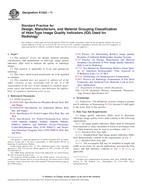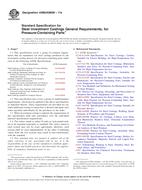1.1 This test method covers the following tests:
1.1.1 Impact tests at the center of both flatware and hollow ware and at the rim of hollow ware, and
1.1.2 Chipping tests at the rim of flatware. Specimens may be either glazed or unglazed.
Note 1-The impact test at the center of the specimen is employed to determine: ( ) the magnitude of a blow that will produce initial fracture, and ( ) the amount of energy necessary to produce complete failure. In the first case, the initial fracture shows on the side of the piece opposite from that being struck, and appears to be a function of the square of the thickness and of the inherent brittleness of the body or body-glaze combination; it is relatively independent of the size or design of the specimen. The second factor is more dependent upon design and often is subject to wide variation within a given group of pieces. Note 2-The impact test at the rim of hollow ware is similar to a chipping test, and the type of failure that is obtained is useful in evaluating the effect of the shape of the object. Note 3-In addition to the inherent strength of the body, chipping test results are greatly affected by contour of rim and to a lesser extent by thickness of rim, inclination of leaf, and fit of glaze.
1.2 The values stated in inch-pound units are to be regarded as the standard. The SI (metric) units given in parentheses are for information purposes only.
1.3 This standard may involve hazardous materials, operations, and equipment. This standard does not purport to address all of the safety problems associated with its use. It is the responsibility of the user of this standard to establish appropriate safety and health practices and determine the applicability of regulatory limitations prior to use.
Product Details
- Published:
- 10/10/1999
- Number of Pages:
- 4
- File Size:
- 1 file , 77 KB


